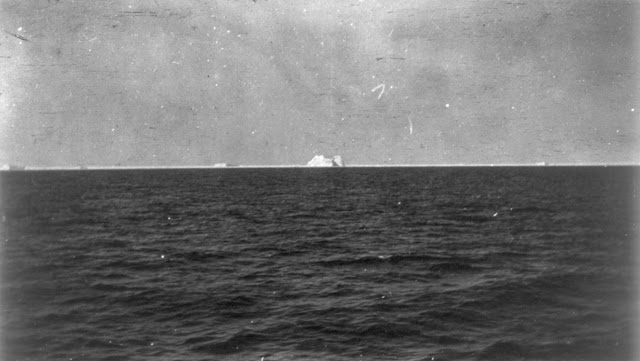The RMS Titanic was a British passenger cruise liner that sank in the North Atlantic Ocean in the early morning of April 15, 1912. It collided with an iceberg during its maiden voyage from Southampton to New York City. It is remembered as one of the deadliest commercial peacetime maritime disasters in modern history with over 1,500 casualties out of about 2,224 passengers and crew aboard the ship. At the time of its accident, the Titanic was the largest ship afloat.
The Titanic carried some of the wealthiest people in the world, as well as hundreds of European emigrants seeking better lives in the United States.
The first-class accommodations included a gymnasium, squash court, a Turkish bath, steam room, massage room, swimming pool, libraries, high-class restaurants, a men’s Smoking Room, and lavish cabins. The Titanic, despite having advanced safety features such as watertight compartments and remotely activated watertight doors, there were not enough lifeboats to accommodate all those on board. There were lifeboats for only 1,178 people: a little more than half of the number of passengers on board, and one-third of the total capacity.
On April 14, around 11:40 ship’s time about 375 miles south of Newfoundland, the Titanic collided with an iceberg and caused the ship’s hull to buckle inwards along the starboard side. The collision opened five of the sixteen watertight compartments to the sea. She was only capable of surviving four compartments flooding.
At 2:20 in the morning, the Titanic broke apart and sank. In less than two hours after the Titanic sank, the RMS Carpathia arrived at the scene and was able to rescue about 700 survivors.

“You weren’t there at my first meeting with Ismay. To see the little red marks all over the blueprints. First thing I thought was: ‘Now here’s a man who wants me to build him a ship that’s gonna be sunk.’ We’re sending gilded egg shells out to sea.”
-Thomas Andrews, Managing Director of Harland and Wolff Shipyards
History
ADVERTISEMENT - CONTINUE READING BELOW

“I cannot imagine any condition which would cause a ship to founder. I cannot conceive of any vital disaster happening to this vessel. Modern shipbuilding has gone beyond that.”
-Captain Smith, Commander of Titanic
History
ADVERTISEMENT - CONTINUE READING BELOW

“I’ll not have so many little boats, as you call them, cluttering up my decks and putting fear into my passengers.”
-J. Bruce Ismay, Director of the White Star Line
Kottke
ADVERTISEMENT - CONTINUE READING BELOW

“There was peace and the world had an even tenor to its way. Nothing was revealed in the morning the trend of which was not known the night before. It seems to me that the disaster about to occur was the event that not only made the world rub its eyes and awake but woke it with a start keeping it moving at a rapidly accelerating pace ever since with less and less peace, satisfaction and happiness. To my mind, the world of today awoke April 15th, 1912.”
-Jack B. Thayer, Titanic Survivor
Kottke
ADVERTISEMENT - CONTINUE READING BELOW

“I was thoroughly familiar with pretty well every type of ship afloat but it took me 14 days before I could, with confidence, find my way from one part of that ship to another.”
– Charles Lightoller, Titanic Second Officer
Kottke
ADVERTISEMENT - CONTINUE READING BELOW

“There were women in the crowd as well as men and these seemed to be steerage passengers who had just come up from the decks below. Even among these people, there was no hysterical cry, no evidence of panic. Oh, the agony of it.”
-Colonel Archibald Gracie, Titanic Survivor
History
ADVERTISEMENT - CONTINUE READING BELOW

“If you look in your dictionary you will find: Titans – A race of people vainly striving to overcome the forces of nature. Could anything be more unfortunate than such a name, anything more significant?”
– Arthur Rostron, Captain of the rescue ship Carpathia
Kottke
ADVERTISEMENT - CONTINUE READING BELOW

“Although you cross the Atlantic for years and have ice reported and never see it, at other times it’s not reported and you do see it.”
– Charles Lightoller, Titanic Second Officer
Kottke
ADVERTISEMENT - CONTINUE READING BELOW

“From the very day that she was designed she was almost doomed…this [the use of iron rivets] was almost the Achilles heel of the Titanic.”
– Paul Louden-Brown, White Star Line Archivist
History
ADVERTISEMENT - CONTINUE READING BELOW

“When anyone asks how I can best describe my experience in nearly 40 years at sea, I merely say, uneventful. Of course, there have been winter gales, and storms and fog the like, but in all my experience, I have never been in any accident of any sort worth speaking about. …… I never saw a wreck and never have been wrecked, nor was I ever in any predicament that threatened to end in disaster of any sort. You see, I am not very good material for a story”
-Captain Smith, Commander of Titanic
Getty Images
ADVERTISEMENT - CONTINUE READING BELOW

“The oarsman laid on their oars and all in the lifeboat were motionless as we watch Her in absolute silence. Save some who would not look and buried their heads on each other’s shoulders.”
-Lawrence Beesley, Titanic Survivor
Getty Images
ADVERTISEMENT - CONTINUE READING BELOW

“There is no danger that Titanic will sink. The boat is unsinkable and nothing but inconvenience will be suffered by the passengers.”
-Phillip Franklin, White Star Line Vice-President
Library of Congress
ADVERTISEMENT - CONTINUE READING BELOW

“I thought her unsinkable and I based my opinion on the best expert advice.”
-Phillip Franklin, White Star Line Vice President
Library of Congress
ADVERTISEMENT - CONTINUE READING BELOW

